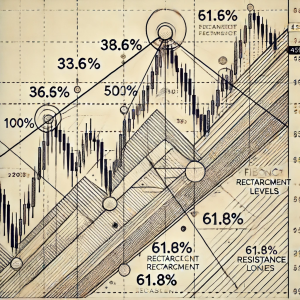Introduction
In today’s volatile and AI-driven financial environment, swing trading remains one of the most adaptable strategies for traders who seek short- to medium-term gains without the stress of minute-to-minute monitoring. But swing trading in 2025 is not what it was a few years ago. From evolving chart patterns to the impact of algorithmic trading and changing macroeconomic indicators, the rules have shifted—and successful traders must evolve along with them.
This article will explore actionable swing trading strategies that are effective in today’s markets, tools that matter, and the psychology traders need to stay consistent in a fast-moving environment.
What Is Swing Trading And Why It Still Works?
Swing trading involves holding a financial instrument—typically forex pairs, equities, or commodities—for several days to a few weeks, aiming to capture a portion of a larger trend. It bridges the gap between day trading’s speed and position trading’s patience, offering the best of both worlds for part-time or less reactive traders.
Unlike high-frequency methods that rely on tiny price movements, swing trading thrives on technical signals, sentiment shifts, and news catalysts—areas where human intuition still holds some ground, even in an AI-dominated landscape.
Strategy Shift: From Backtesting To Pattern Recognition
A key insight from recent thought leaders, like those at DataDrivenInvestor, is that backtested strategies are becoming less reliable. Why? The market adapts. Strategies that performed well on past data often degrade quickly once they’re widely adopted or discovered by institutions with advanced computing resources.
Instead of over-relying on past results, modern swing traders focus on real-time price structure, news sentiment, and adaptive trend lines.
That doesn’t mean technical indicators are dead—but it does mean flexibility is essential. For instance, rather than applying Bollinger Bands rigidly, traders now look at how these bands behave in the context of volatility expansion, volume confirmation, and macro-level sentiment.
Technical Tools That Still Work (If Used Smartly)
While many classic tools have aged, some remain relevant when interpreted dynamically:
Bollinger Bands: Still useful in identifying price extremes, but best when combined with momentum indicators like RSI or MACD for entry confirmation.
Fibonacci retracement levels: Widely used for identifying potential reversal zones, particularly in trending markets where swing entries are timed on pullbacks.
Volume profile: Useful for identifying price levels where significant buying or selling interest has previously occurred—strong potential zones for swing entries.
EMA Crossovers: Short-term (9/21 EMA) and medium-term (21/50 EMA) crossovers can still offer swing signals, particularly when aligned with market news or earnings reports in the equity space.
Risk Management In 2025: Tighter, Smarter, Safer
The one thing that hasn’t changed is the importance of risk management. If anything, it’s even more critical now due to the increased speed and volatility of today’s markets.
Swing traders are now using:
Tighter stop losses with smarter trailing mechanics.
Position sizing based not just on account percentage, but on volatility-adjusted metrics like ATR (Average True Range).
Time stops: Pre-defining the maximum time a trade can remain open even if it hasn’t hit a stop or target, reducing exposure to unpredictable weekend gaps or news releases.
The AI Factor: Friend Or Foe?
AI-powered trading bots dominate short-term price action, often creating whipsaws and false breakouts that can punish unprepared swing traders. However, traders can actually leverage AI patterns by analyzing behavioral repetition—like how bots react to certain price levels or news releases. For instance:
After major economic data releases, AI bots typically generate initial surges followed by corrections. Experienced swing traders can fade the move or enter on the second impulse.
Identifying bot-generated volume spikes can help traders position after the noise settles, capturing the true market direction.
Trading Psychology: More Important Than Ever
Swing trading requires a unique mindset. Traders must tolerate intra-trade fluctuations, trust in their analysis, and avoid the trap of over-management. Many 2025 traders fall victim to over-monitoring their trades—micromanaging every tick in a strategy designed to span days.
Top habits of successful swing traders today:
Routine-based analysis, not emotional reactions.
Trade journaling with specific attention to emotional triggers.
Taking breaks between trades to avoid compounding bad decisions.
Final Thoughts
Swing trading is far from obsolete—but it is no longer a plug-and-play strategy. Traders who thrive in 2025 do so because they adapt, integrate tools thoughtfully, and focus on risk-to-reward over perfection.
As markets get smarter, your strategies must too. With the right mindset, tools, and flexibility, swing trading can still be a powerful weapon in the forex trader’s arsenal—especially in a world flooded by speed and automation.



